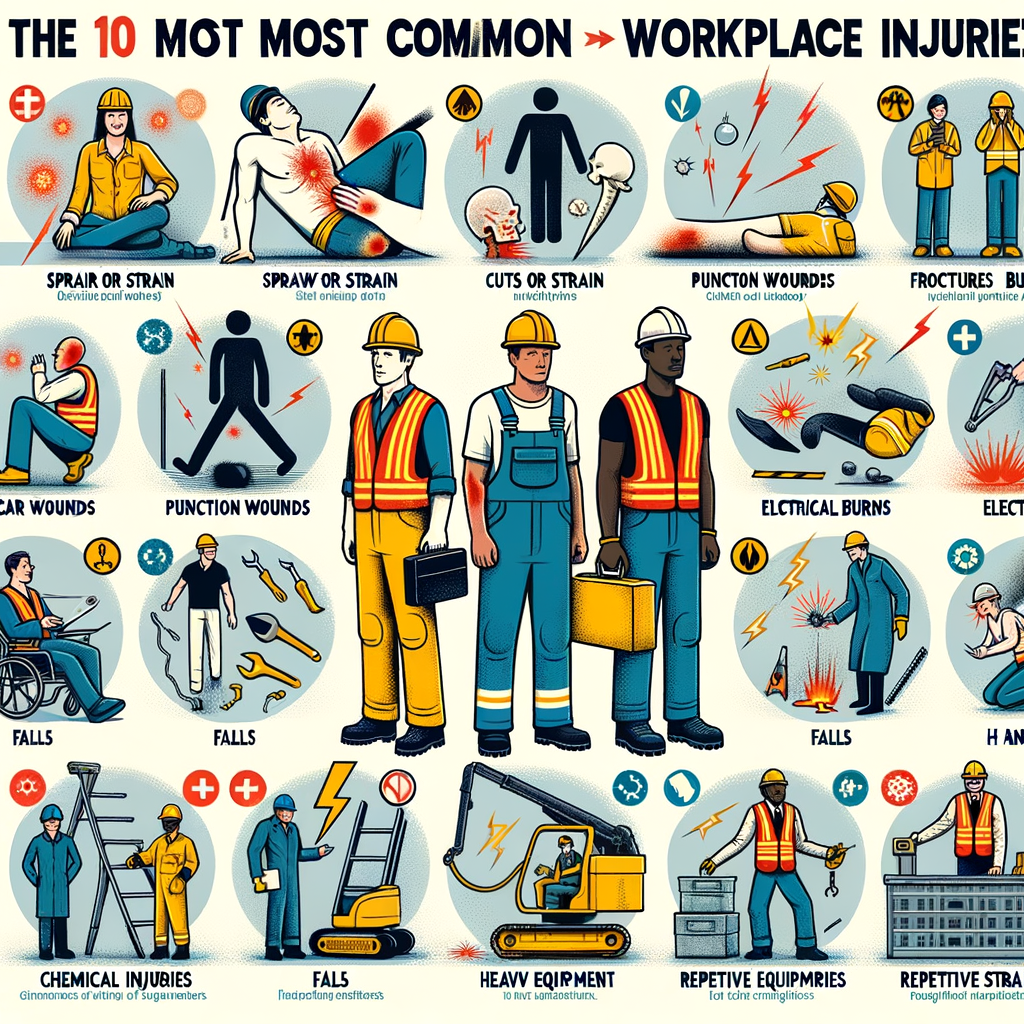10 Most Common Workplace Injuries

Workplace injuries can have a significant impact on both employees and employers. They can result in physical pain, emotional distress, and financial burdens. Understanding the most common workplace injuries is crucial for creating a safe and healthy work environment. In this article, we will explore the top 10 workplace injuries, their causes, and how they can be prevented.
1. Slips, Trips, and Falls
Slips, trips, and falls are the leading cause of workplace injuries. They can occur due to wet or slippery floors, uneven surfaces, or cluttered walkways. Employers can prevent these accidents by maintaining clean and dry floors, providing proper lighting, and implementing clear signage to warn employees of potential hazards.
2. Overexertion
Overexertion injuries often result from lifting, pushing, pulling, or carrying heavy objects. These injuries can lead to strains, sprains, and muscle tears. Employers can reduce the risk of overexertion by providing training on proper lifting techniques, using mechanical aids when necessary, and encouraging employees to take regular breaks.
3. Struck by Objects
Being struck by objects is a common workplace hazard, especially in industries such as construction or manufacturing. Falling tools, equipment, or materials can cause serious injuries. Employers should ensure that employees wear appropriate personal protective equipment (PPE), such as hard hats and safety goggles, and implement measures to secure objects at heights.
4. Repetitive Motion Injuries
Repetitive motion injuries, also known as musculoskeletal disorders (MSDs), occur when employees perform repetitive tasks for extended periods. Examples include carpal tunnel syndrome and tendonitis. Employers can prevent these injuries by providing ergonomic workstations, offering regular breaks, and promoting stretching exercises.
5. Vehicle Accidents
Vehicle accidents can happen to employees who drive as part of their job, such as delivery drivers or truck drivers. These accidents can result in severe injuries or even fatalities. Employers should enforce safe driving practices, provide defensive driving training, and regularly maintain company vehicles.
6. Machinery Accidents
Working with machinery poses significant risks if proper safety precautions are not followed. Employees can get caught in moving parts, leading to amputations or severe injuries. Employers must provide comprehensive training on machinery operation, install safety guards, and conduct regular maintenance checks.
7. Electrical Shocks
Electrical shocks can occur when employees come into contact with live wires or faulty electrical equipment. These accidents can cause burns, cardiac arrest, or even death. Employers should ensure that electrical systems are regularly inspected, provide proper training on electrical safety, and encourage the use of personal protective equipment.
8. Burns and Chemical Exposure
Employees working with chemicals or in environments with open flames are at risk of burns and chemical exposure. These injuries can range from minor burns to severe chemical burns. Employers should provide appropriate protective clothing, implement proper storage and handling procedures for chemicals, and train employees on emergency response protocols.
9. Falling from Heights
Falling from heights is a significant risk for employees working on elevated surfaces, such as roofs or scaffolding. These accidents can result in broken bones, head injuries, or even death. Employers should provide fall protection equipment, such as harnesses and guardrails, and ensure that employees receive proper training on working at heights.
10. Workplace Violence
Workplace violence can occur in any industry and can lead to physical injuries, emotional trauma, and even fatalities. Employers should implement comprehensive workplace violence prevention programs, train employees on conflict resolution and de-escalation techniques, and establish clear reporting procedures.
Conclusion
Preventing workplace injuries is a shared responsibility between employers and employees. By understanding the most common workplace injuries and implementing appropriate preventive measures, we can create safer work environments. From maintaining clean floors to providing proper training and protective equipment, every step taken towards injury prevention contributes to the well-being of both individuals and organizations.







